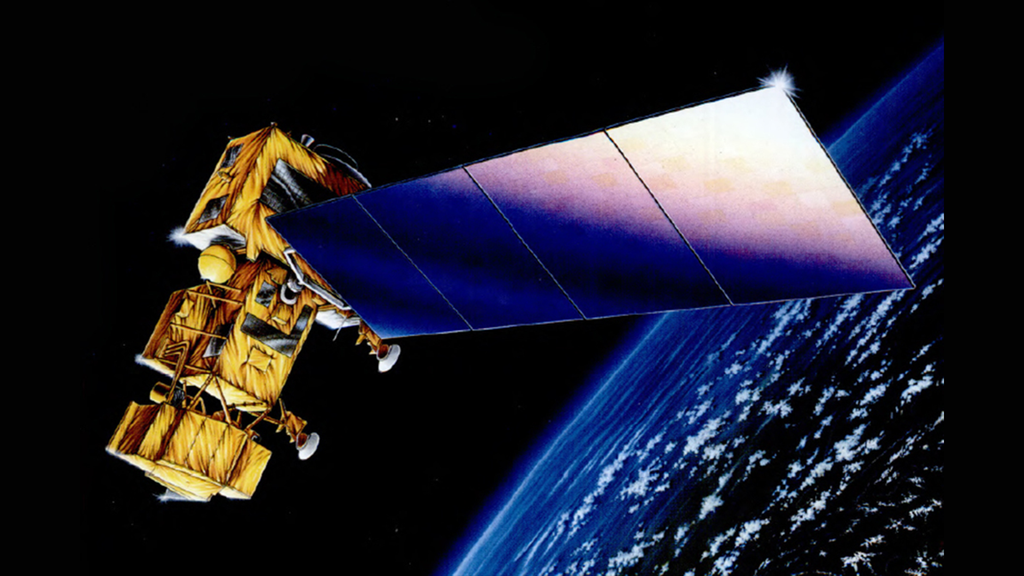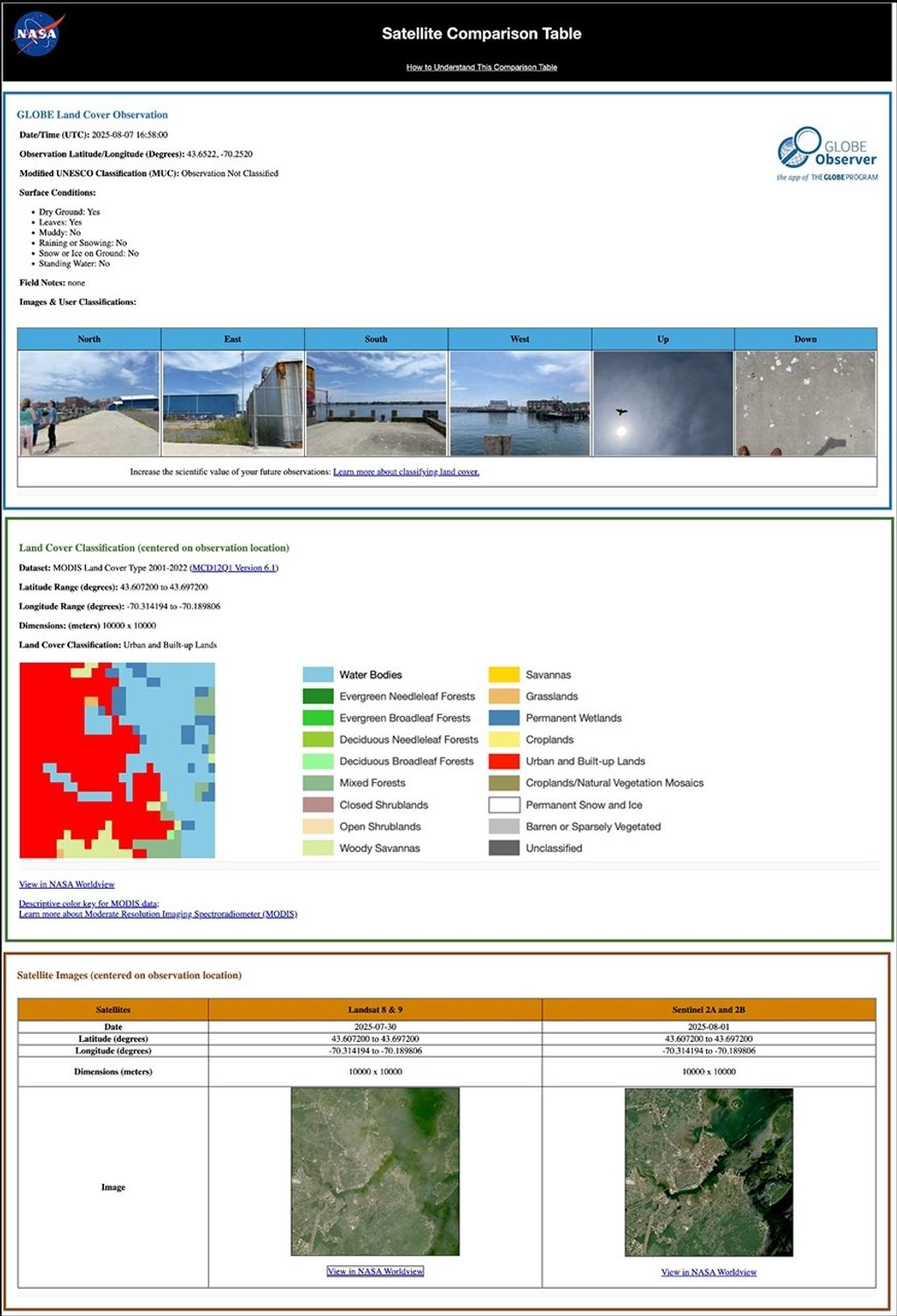1 min read
Illustration of the Firefly Sparkle Galaxy in the Early Universe (Artist’s Concept)
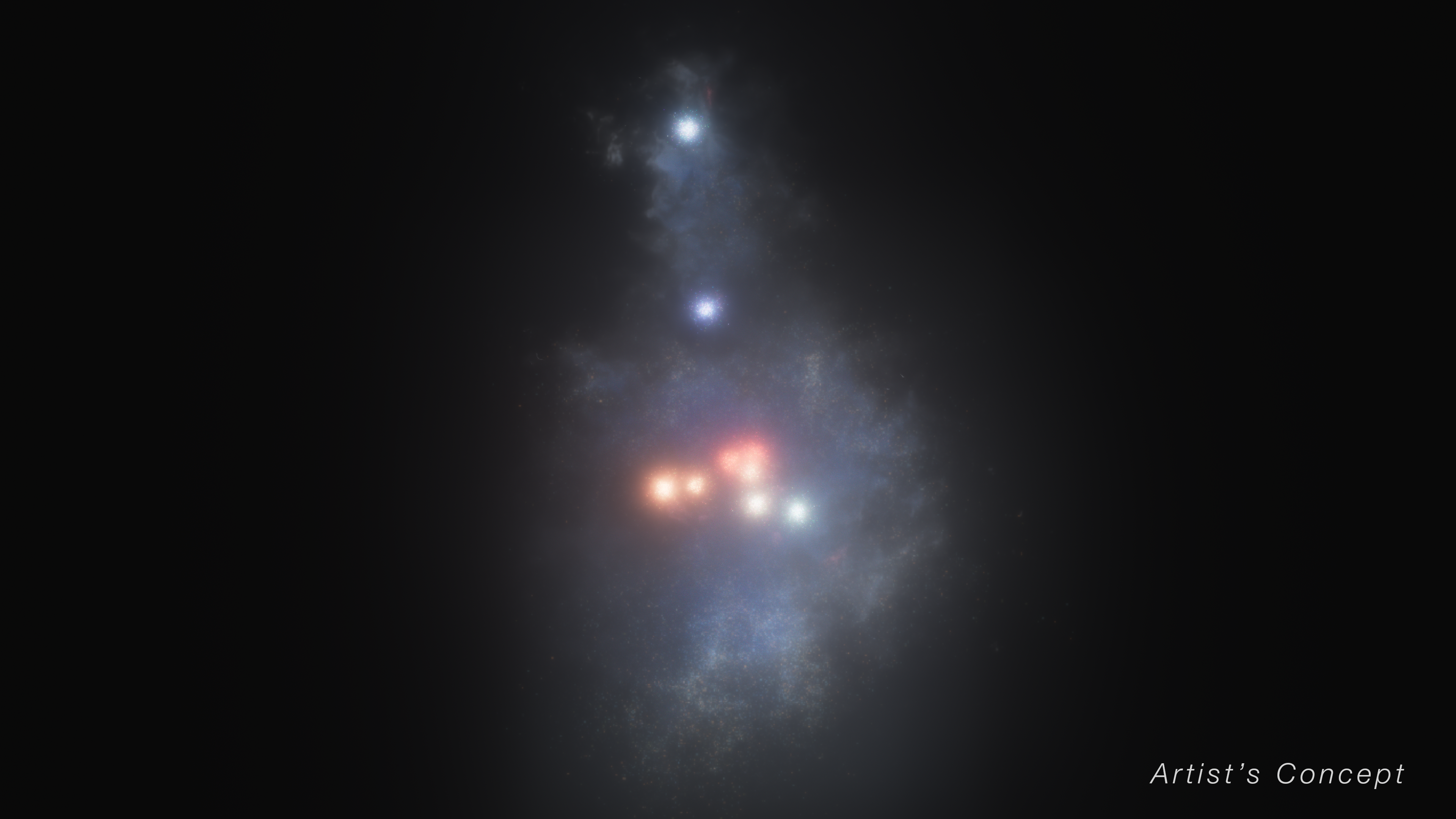
This illustration depicts a reconstruction of what the Firefly Sparkle galaxy looked like about 600 million years after the big bang if it wasn’t stretched and distorted by a natural effect known as gravitational lensing. This concept is based on images and data from NASA’s James Webb Space Telescope.
A research team led by Lamiya Mowla, an assistant professor at Wellesley College in Massachusetts, projects that this galaxy looked like an elongated raindrop, with a pair of star clusters appearing in the stretched top, and eight suspended at the bottom. The stars are surrounded by diffuse light from additional, unresolved stars that lie outside the star clusters.
The researchers also determined that the majority of the mass in the galaxy lies in its star clusters, which appear here in shades of pink, purple, and blue — not the dispersed stars that surround the star clusters.
The colors are one indication that star formation didn’t happen all at once throughout this galaxy. Instead, it was staggered in time. “At this stage of the galaxy’s formation, there are young stars and slightly younger stars,” explained Kartheik Iyer, a team member and NASA Hubble Fellow at Columbia University. “Galaxies that existed in the very early universe are thought to host extreme bursts of star formation.”
Over billions of years, a bigger portion of the galaxy’s mass may settle into a central bulge or a thin, flattened disk — but it is not possible to accurately predict how it will take shape.
Webb’s spectra confirmed that this galaxy is still on the lighter side, falling into the category of a low-mass galaxy. Billions of years will pass before the Firefly Sparkle builds its full heft and distinct architecture. The Firefly Sparkle’s current mass is similar to what our Milky Way galaxy’s would have been as it was forming at about the same time.
- Release DateDecember 11, 2024
- Science ReleaseFound: First Actively Forming Galaxy as Lightweight as Young Milky Way
- CreditIllustration: NASA, ESA, CSA, Ralf Crawford (STScI); Science: Lamiya Mowla (Wellesley College), Guillaume Desprez (Saint Mary's University)
Related Images & Videos
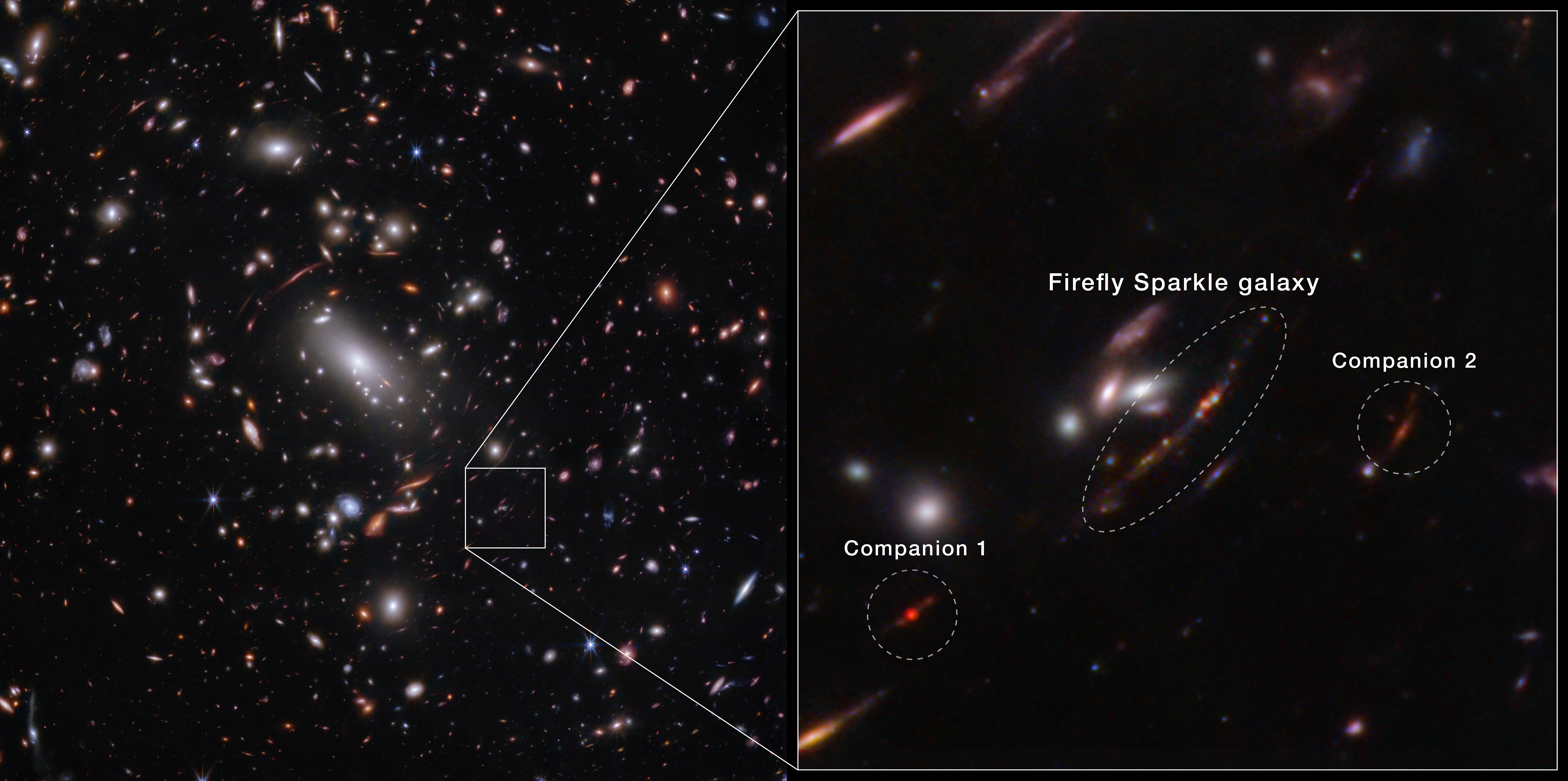
Firefly Sparkle Galaxy and Companions in Galaxy Cluster MACS J1423 (NIRCam Image)
For the first time, astronomers have identified a still-forming galaxy that weighs about the same as our Milky Way if we could “wind back the clock” to weigh our galaxy as it developed. The newly identified galaxy, the Firefly Sparkle, is in the process of assembling and forming...
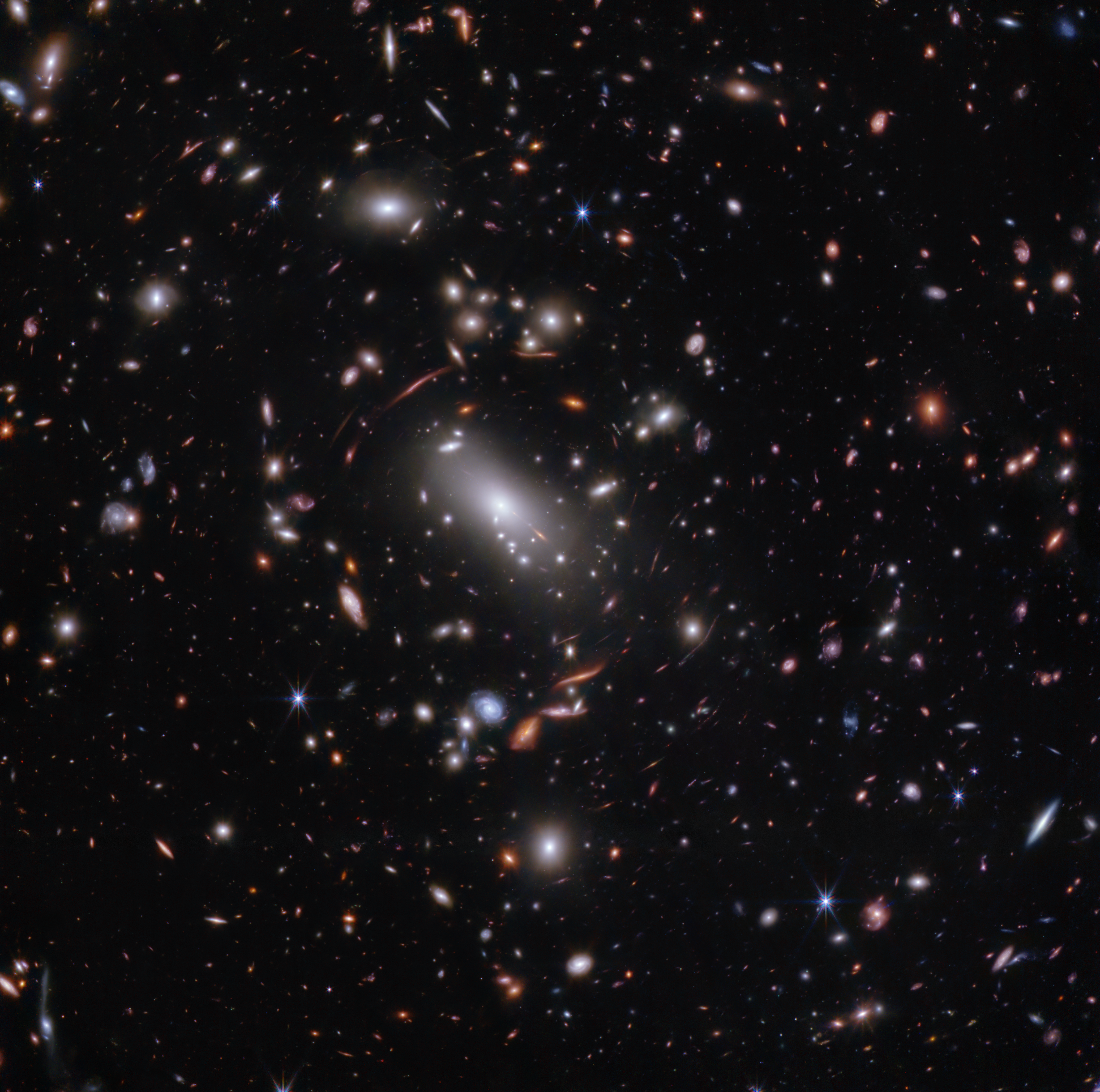
Galaxy Cluster MACS J1423 (NIRCam Image)
Thousands of glimmering galaxies are bound together by their own gravity, making up a massive cluster formally classified as MACS J1423. The largest bright white oval is a supergiant elliptical galaxy and the dominant member of this galaxy cluster. The galaxy cluster acts like a...
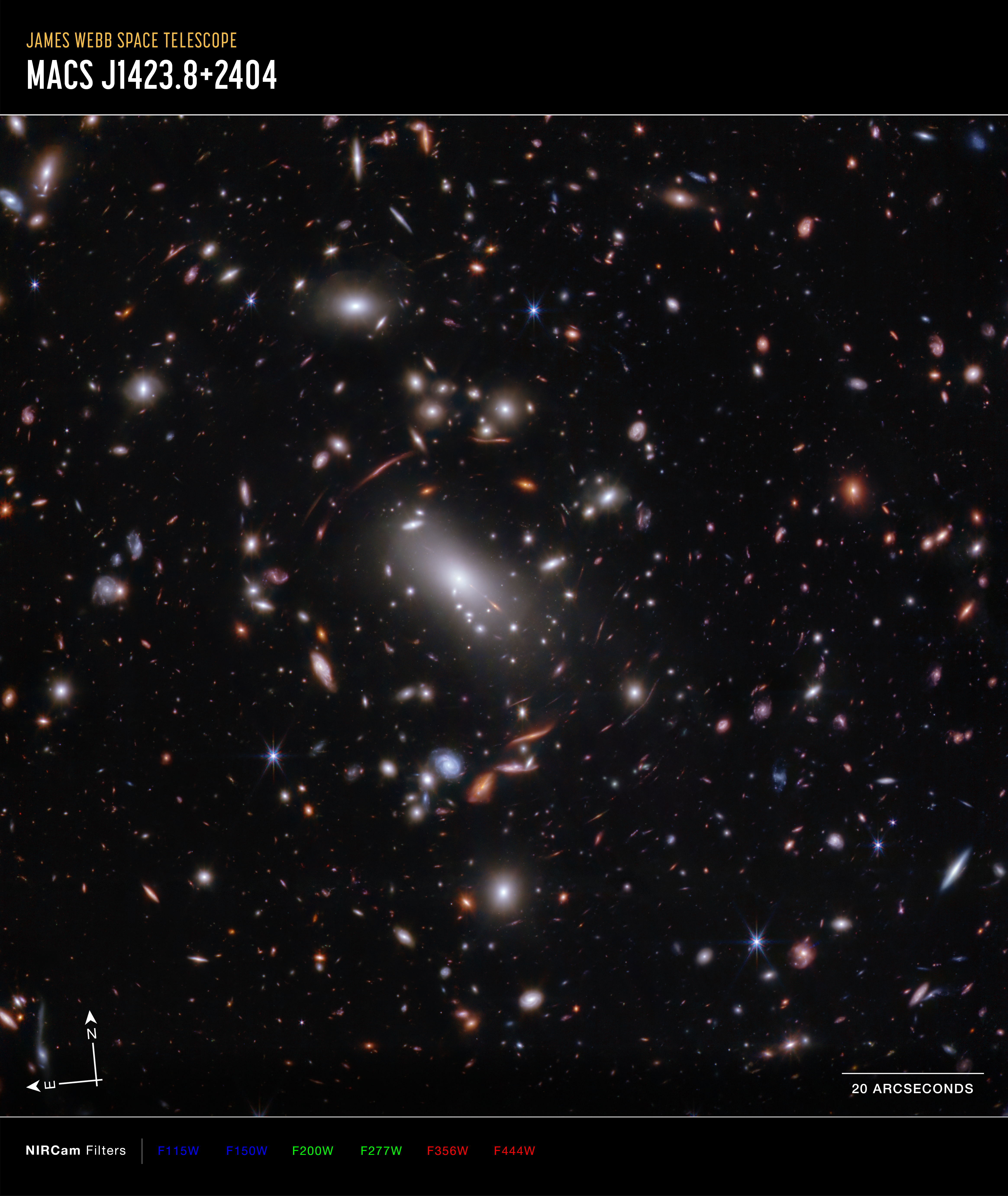
Galaxy Cluster MACS J1423 (NIRCam Compass Image)
This image of galaxy cluster MACS J1423, captured by the James Webb Space Telescope’s NIRCam (Near-Infrared Camera), shows compass arrows, scale bar, and color key for reference. The north and east compass arrows show the orientation of the image on the sky. The scale bar is...
Share
Details
Laura Betz
NASA’s Goddard Space Flight Center
Greenbelt, Maryland
laura.e.betz@nasa.gov
NASA, ESA, CSA, Ralf Crawford (STScI)
Lamiya Mowla (Wellesley College), Guillaume Desprez (Saint Mary’s University)









